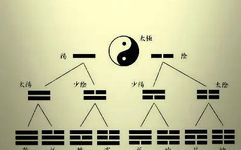
Yin-Yang and the Five Elements
yinyang&wuxing
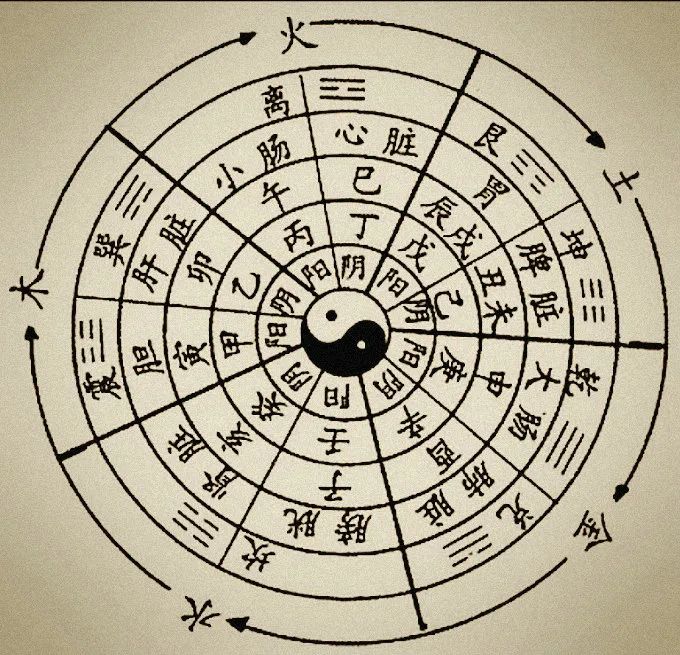
The theory of Yin-Yang and the Five Elements is the core of traditional Chinese culture. Yin-Yang refers to the duality of opposites and the Five Elements represent the fundamental components of the universe.

Yin-Yang

Yin and Yang interact to create all things; everything in the world follows the principles of Yin and Yang. Ancient Chinese philosophy uses “Yin and Yang” to express the duality and interdependence of all things. The Tao Te Ching states, “All things carry Yin and embrace Yang,” while the Book of Changes says, “The way of one Yin and one Yang is the Dao.” The Su Wen states, “Yin and Yang are the principles of heaven and earth, the framework of all things, the parents of change, the source of life and death, and the abode of the divine.” The I Ching discusses the mathematical and philosophical changes of Yin and Yang.
Yin and Yang can transform into one another, and they are mutually dependent. This means that each aspect of Yin and Yang exists only in relation to the other. Without Yin, Yang cannot exist; without Yang, Yin cannot exist. Just as there is no heaven without earth, there is no Yin without Yang. Yin and Yang are interdependent and mutually functional.
The interdependence of Yin and Yang is a dynamic process that accompanies the life of all things and determines their development.
Yin and Yang represent many meanings and principles, which can be broadly categorized into: the opposition of Yin and Yang, the transformation of Yin and Yang, and the mutual rooting of Yin and Yang.
Opposition of Yin and Yang
The opposition of Yin and Yang refers to the existence of two opposing aspects in all things or phenomena, such as up and down, heaven and earth, movement and stillness, rise and fall, etc. Here, up belongs to Yang, down belongs to Yin; heaven is Yang, earth is Yin; movement is Yang, stillness is Yin; rise is Yang, fall is Yin. The opposing aspects of Yin and Yang are mutually dependent; neither can exist without the other. For example, there is no up without down; heat is Yang, cold is Yin, and without cold, there is no heat. Thus, we can say that Yang depends on Yin, and Yin depends on Yang; each side exists only in relation to its opposite, which is the mutual perception of Yin and Yang.
The unity of Yin and Yang is a necessary condition for the existence of Tai Chi and is also the inevitable result of its development.
Any thing can be classified by the attributes of Yin and Yang, but this classification must be based on a pair of interrelated things or two aspects of a single thing; otherwise, the classification lacks practical significance. If the two analyzed things are unrelated or not two opposing aspects of a unified whole, then Yin and Yang cannot be used to distinguish their relative attributes and relationships.
The Yin and Yang attributes of things are not absolute but relative. This relativity manifests in two ways: under certain conditions, Yin and Yang can transform into one another, meaning Yin can become Yang and Yang can become Yin. On the other hand, it reflects the infinite divisibility of things.
The theory of Yin and Yang posits that any natural thing includes two opposing aspects of Yin and Yang, and these opposing sides are also mutually unified. The movement of the opposition and unity of Yin and Yang is the fundamental reason for the occurrence, development, change, and extinction of all things in nature.
Yin represents the most basic opposites of all things:
Yin is cold, dark, gathering, and materialization.
Yang is hot, light, transformation, and vaporization.
Yin contains Yang, and Yang contains Yin; the interaction of Qi creates harmony (as if the formless Qi separates Yin and Yang, allowing each to occupy its place).
Transformation of Yin and Yang
The transformation of Yin and Yang. The I Ching states, “What the gentleman dwells in and is at peace with is the order of change.” This order of change can be understood in various ways. From a temporal perspective, the four seasons follow natural rules that are not subject to human will; after spring comes summer, and at the height of summer, Yang energy reaches its peak and must transform into Yin, which is autumn. After autumn comes winter, revealing profound insights into the laws of nature and society. For example, in a day, there are twelve hours; noon is the peak of Yang, but it is also the moment when Yin begins to emerge. As time progresses, Yang continuously diminishes while Yin increases, leading to the transformation of Yang into Yin, and as it reaches midnight, Yin reaches its peak, after which Yin begins to diminish and Yang begins to increase.
The positions of Yin and Yang are constantly changing, cycling repeatedly. The things we can see are Yin within Yang (this is the aggregation of Yang residing above), while the opposite is anti-matter (similar to a black hole). All things must conform to the laws and structures of Yin and Yang, just as a person is born (aggregation) and then dies (dissipation); this is the law of Yin and Yang. When the balance of Yin and Yang is disrupted or their positions are incorrect, it leads to illness.
Mutual Rooting of Yin and Yang
Mutual rooting of Yin and Yang: Yang exists within Yin, and Yin does not leave Yang; solitary Yin cannot give birth, and solitary Yang cannot grow; without Yang, Yin cannot be born, and without Yin, Yang cannot transform. Therefore, heaven and earth are paired with Yin and Yang. Thus, it is said that Yin and Yang mutually root each other. Only through the harmony of Yin and Yang can all things be born. The four seasons of spring, summer, autumn, and winter cycle continuously, and at no time do they exist independently; the extreme of cold indicates the emergence of warmth, and the extreme of warmth indicates the emergence of cold. This is the natural principle of heaven and earth. The development and change of any thing are not isolated; without contradiction, there is no world. Without contradiction and the resolution of contradictions, there can be no development and change. This theory of the unity of opposites is one of the fundamental viewpoints of material dialectics.
On Earth, the most significant manifestation of Yin and Yang is the influence of the sun and moon on the Earth. This is because the movement of the Earth is expressed as two relative movements: one relative to the sun and the other relative to the moon. These two movements exist in a unified manner above the movement of the Earth, forming an inseparable comprehensive influence of Yin and Yang on the research object. Yin exists within Yang, and Yang exists within Yin, and they cannot be separated.
Ancient sages of China observed the heavens and the earth, summarizing, generalizing, and refining the natural observations of Yin and Yang, forming the study of changes, and applying the principles of changes to various fields such as medicine, military science, philosophy, and prediction, leaving a valuable legacy for future generations.

Five Elements

Origins of the Five Elements
Between heaven and earth, there is only one Qi. Only through movement and stillness can Yin and Yang be differentiated; through old and young, the four images can be distinguished.
Water is the Great Yin; fire is the Great Yang; wood is the Lesser Yang; metal is the Lesser Yin; earth is the balance of Yin and Yang, formed by the interaction of water, wood, fire, and metal. (from Zi Ping Zhen Quan)
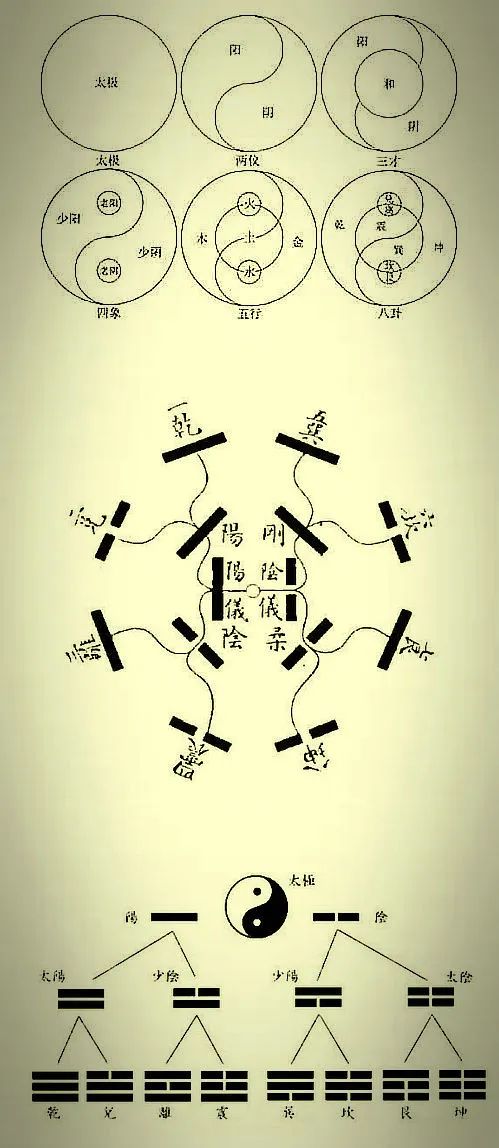
The way of heaven and earth creates all things through the dual Qi of Yin and Yang. Yin and Yang are the fundamental laws of the universe, and all things in the universe arise from the interaction of Yin and Yang. Wu Ji generates Tai Ji, Tai Ji generates the two polarities, the two polarities generate the four images, and the four images generate the eight trigrams. This is the trajectory of the transformation of Yin and Yang.
From the fundamental properties, the different states produced by the interaction of Yin and Yang can be summarized into five: first, the state of Yin diminishing and Yang increasing (Yang greater than Yin); second, the state of Yang diminishing and Yin increasing (Yin greater than Yang); third, the state of extreme Yang (pure Yang); fourth, the state of extreme Yin (pure Yin); fifth, the state of balance between Yin and Yang (Yin equal to Yang).
Ancient people explored the laws of the development of all things in the universe, summarizing the fundamental nature of the states of change in Yin and Yang. The myriad states of change resulting from the interaction of Yin and Yang can be classified into five fundamental properties. The ancients used metaphorical comparisons to express the principles of Yin and Yang clearly and concisely as the Five Elements: they represented the state of Yin diminishing and Yang increasing with the image of “wood”; the state of extreme Yang with the image of “fire”; the state of Yang diminishing and Yin increasing with the image of “metal”; the state of extreme Yin with the image of “water”; and the state of balance between Yin and Yang with the image of “earth.” Wood, fire, metal, water, and earth represent the five fundamental properties of existence in the process of Yin and Yang movement. Zhang Jingyue in Classified Classic Diagram said, “The Five Elements are the essence of Yin and Yang, and Yin and Yang are the Qi of the Five Elements. Qi cannot exist without essence, and essence cannot function without Qi. Functioning is the way to operate the Qi of Yin and Yang,” which reveals the profound truth.
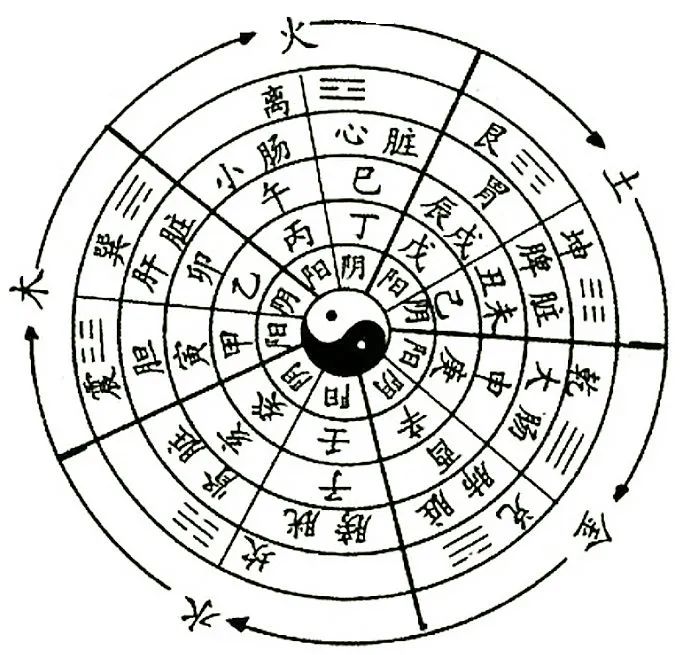
Ancient Chinese philosophers used the theory of the Five Elements to explain the formation of all things in the world and their interrelationships. It emphasizes the whole and aims to describe the forms of movement and transformation of things. Yin and Yang is the ancient theory of opposites and unity, while the Five Elements is a systematic theory summarized from the perspective of fundamental properties.
The theory of the Five Elements uses metaphorical comparisons to simply categorize all things in the world into five categories. Based on the attributes of the Five Elements, it explains and interprets the interconnections and changes between things using the relationships of generation and overcoming. Like Yin and Yang, there are laws of mutual generation and overcoming among the Five Elements. Mutual generation and overcoming are two inseparable aspects of any thing. Without mutual generation, there can be no occurrence or development of any thing; without overcoming, there can be no coordination and balance in the development of things. Mutual generation ensures the driving force and possibility of development, while overcoming ensures the control and coordination of development. The relationship of mutual generation and overcoming, where there is generation within overcoming and overcoming within generation, complements and supports each other, promoting and maintaining the continuous growth, change, and development of things. Classified Classic Diagram states: “The mechanism of creation cannot be without generation, nor can it be without control. Without generation, there is no way to develop; without control, there will be excess and harm. The cycle of generation and overcoming operates endlessly, and this is the infinite way of heaven and earth.”
Using the various characteristics of the Five Elements, centered around wood, fire, earth, metal, and water, all properties of natural phenomena are categorized into these five categories. Any phenomenon, characteristic, form, function, or expression in the natural world that resembles the characteristics of one of the Five Elements is classified into that element, creating a systematic categorization based on the attributes of the Five Elements, thereby elucidating the connections and changing relationships among various categories.
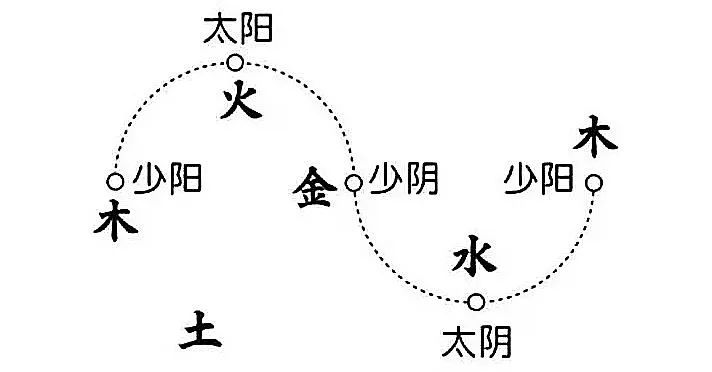
The interaction of Yin and Yang gives rise to all things in the universe, and all things in the universe are the unity of opposites of Yin and Yang. Yin and Yang are not only the source of the Eight Trigrams but also the source of the Five Elements.
The Four Images are points of particular significance identified from the laws of movement and change of Yin and Yang, which can represent the entire process of Yin and Yang movement and change. The Five Elements, on the other hand, are classifications made by ancient people based on the different states produced by the movement and change of Yin and Yang, focusing on their properties.
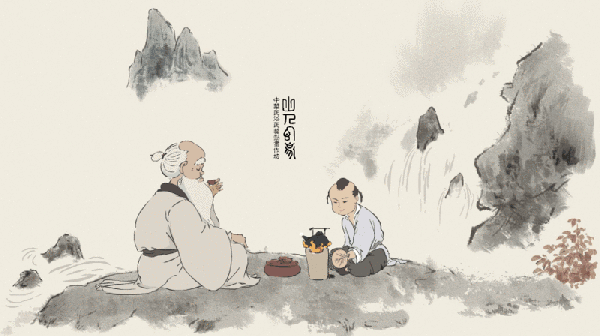
Records of the Five Elements
The term “Five Elements” first appeared in the Book of Documents in the sections of Gan Zhi and Hong Fan. Gan Zhi records, “The Hu clan threatened the Five Elements, neglecting the three justices, and heaven used its might to eradicate their lives”; Hong Fan records, “Gun controlled the flood, and the Five Elements were presented; the emperor was furious and did not grant the nine categories of Hong Fan… Gun was executed, and Yu succeeded, and heaven granted Yu the nine categories of Hong Fan, and the principles were established… The Five Elements: first is water, second is fire, third is wood, fourth is metal, fifth is earth. Water moistens downward, fire blazes upward, wood bends and straightens, metal transforms and changes, earth is for planting and harvesting. Moistening downward produces salt, blazing upward produces bitterness, bending and straightening produces sourness, transforming and changing produces spiciness, and planting and harvesting produces sweetness.” This presents the order of the Five Materials, with water as the first, along with their properties and functions, but it does not touch upon the internal connections between the Five Elements.
In Hong Fan, the Five Elements are clearly defined as water, fire, wood, metal, and earth, and are considered fundamental. During the reign of King You of Zhou, the Five Elements were recognized as the five basic substances that constitute all things. The Zuo Zhuan also mentions the Five Elements, where they are closely related to the “Five Elements of the Earth” and the “Five Materials” in terms of reproduction.
The Five Elements concern the presentation and continuous operation of nature. The term “Xing” (行) refers to the natural “operation” that follows the inherent rules of its presentation and continues to move. Therefore, when Gun controlled the flood, the emperor was furious because this was an act that violated the natural order. The heavenly mandate descended upon Yu because Yu guided the water according to the situation, as the nature of water is to flow. Blocking the flow to control it disrupts the nature of water, which will inevitably provoke heavenly wrath and lead to human resentment. Thus, Xia Qi attacked the Hu clan, believing that the act of punishment was “to respectfully carry out the punishment of heaven, not to attack the left if you do not respect the mandate, nor to attack the right if you do not respect the mandate…”
Characteristics of the Five Elements
This viewpoint originates from Hong Fan, and modern people often interpret it as:
The characteristics of wood: it rises in the east, resembling wood. The ancients referred to wood as “bending and straightening.” “Bending and straightening” actually refers to the growth form of trees, with branches and trunks bending and straightening, extending upward and outward. Therefore, it is extended to include things that have the properties of growth, upward movement, and smoothness, which all belong to wood.
The characteristics of fire: it is hot in the south, resembling fire. The ancients referred to fire as “blazing upward.” “Blazing upward” refers to the property of fire to be warm and rise. Therefore, it is extended to include things that have the properties of warmth and upward movement, which all belong to fire.
The characteristics of earth: it is fertile in the central plains, resembling earth. The ancients referred to earth as “the source of planting and harvesting,” indicating that earth has the function of planting and harvesting crops. Therefore, it is extended to include things that have the properties of nurturing, bearing, and receiving, which all belong to earth. Hence, there is the saying that “earth bears the four actions” and “earth is the mother of all things.”
The characteristics of metal: it sets in the west, resembling metal. The ancients referred to metal as “transforming and changing.” “Transforming and changing” refers to the meaning of “change.” Therefore, it is extended to include things that have the properties of cleanliness, suppression, and gathering, which all belong to metal.
The characteristics of water: it is cold in the north, resembling water. The ancients referred to water as “moistening downward.” This indicates that water has the properties of moistening and flowing downward. Therefore, it is extended to include things that are cold, moistening, and flowing downward, which all belong to water.
Confucius’ Family Sayings states: “Heaven has five elements: water, fire, metal, wood, and earth, which transform and nurture to create all things.”
Wood has the characteristics of growth and spreading, belonging to the east.
Fire has the characteristics of heat and upward movement, belonging to the south.
Earth has the characteristics of nurturing and transformation, belonging to the center.
Metal has the characteristics of tranquility and suppression, belonging to the west.
Water has the characteristics of coldness and downward movement, belonging to the north.
Wood generates fire: the warmth of wood generates fire; fire generates earth: the heat of fire burns wood, and the ashes become earth; earth generates metal: metal resides in stone and depends on moisture to grow, gathering earth into mountains, which must produce stones; metal generates water: the subtle Yin Qi moistens dryness and flows, and melting metal also becomes water, thus the mountain stone is moistened; water generates wood: because water moistens, it can generate wood.
The nature of heaven and earth is that the many overcome the few, thus water overcomes fire. The subtle overcomes the firm, thus fire overcomes metal. The firm overcomes the soft, thus metal overcomes wood. The concentrated overcomes the dispersed, thus wood overcomes earth. The substantial overcomes the void, thus earth overcomes water.
Mutual Generation and Overcoming of the Five Elements
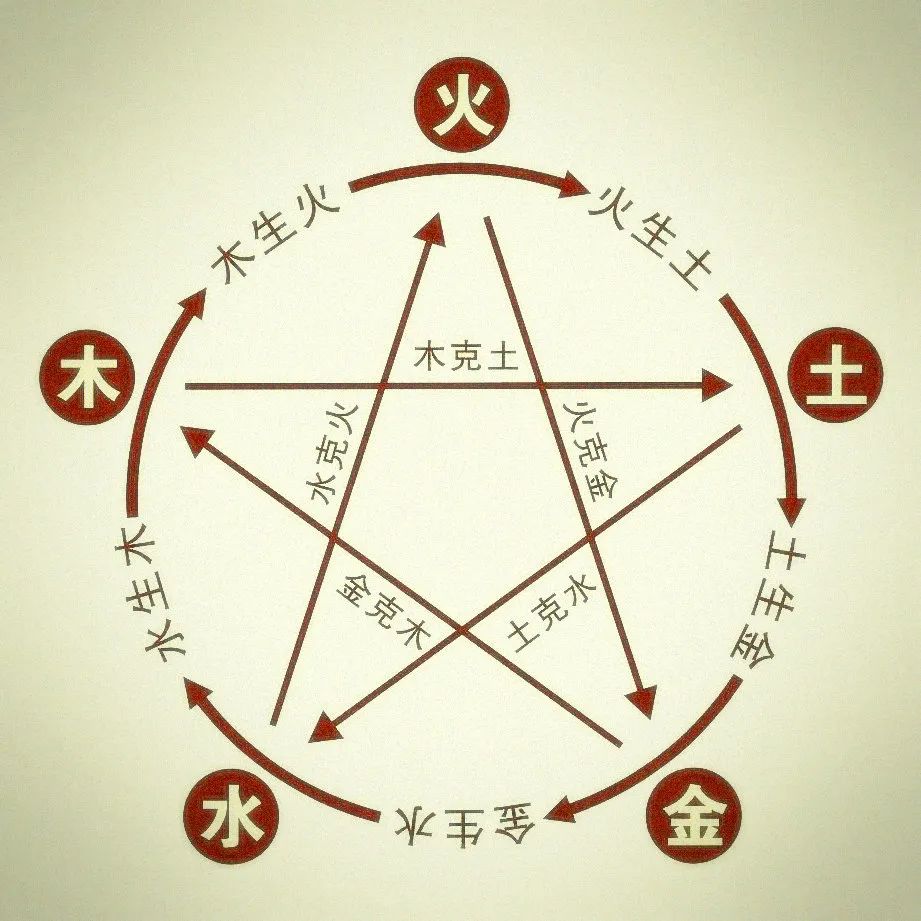
Mutual Generation of the Five Elements: Wood → Fire → Earth → Metal → Water
Wood generates fire, fire generates earth, earth generates metal, metal generates water, water generates wood.
Yang wood overcomes fire, Yang fire overcomes earth, Yang earth overcomes metal, Yang metal overcomes flowing water, Yang water overcomes wood.
Wood generates fire: the warmth of wood generates fire;
Fire generates earth: fire burns wood to create earth;
Earth generates metal: earth conceals minerals to generate metal;
Metal generates water: metal condenses to generate water;
Water generates wood: water nourishes to generate wood.
Overcoming of the Five Elements: Metal → Wood → Earth → Water → Fire
Metal overcomes wood, wood overcomes earth, earth overcomes water, water overcomes fire, fire overcomes metal.
The firm overcomes the soft, thus metal overcomes wood; because tools can cut down trees;
The concentrated overcomes the dispersed, thus wood overcomes earth; because trees can root in the soil;
The substantial overcomes the void, thus earth overcomes water; because dams can stop the flow of water;
The many overcome the few, thus water overcomes fire; because a flood can extinguish flames;
The subtle overcomes the firm, thus fire overcomes metal; because intense fire can melt metal.
What seems like overcoming is actually mutual generation.
Mutual Generation and Overcoming of the Five Elements
The mutual generation and overcoming of the Five Elements refers to the normal generative and overcoming relationships being disrupted, leading to abnormal overcoming phenomena.
Mutual Generation of the Five Elements
Mutual generation refers to excessive restraint or overcoming of one element over another. The order of mutual generation is the same as that of overcoming: wood overcomes earth, earth overcomes water, water overcomes fire, fire overcomes metal, metal overcomes wood. There are two situations that lead to mutual generation: one is when one element is overly strong and excessively restrains the element it overcomes, leading to mutual generation, such as wood being overly strong and overcoming earth; the other is when one element is too weak to resist the normal restraint of the element it overcomes, leading to mutual generation, such as earth being weak and wood overcoming it.
Mutual Overcoming of the Five Elements
Mutual overcoming refers to the reverse restraint of one element over another that it does not normally overcome. The order of mutual overcoming is: wood overcomes metal, metal overcomes fire, fire overcomes water, water overcomes earth, earth overcomes wood. There are two reasons for mutual overcoming: one is when one element is overly strong, causing the element that normally overcomes it not only to fail to restrain it but to be restrained in return, leading to mutual overcoming, such as wood being overly strong and overcoming metal; the other is when one element is too weak, failing to restrain the element it normally overcomes, leading to mutual overcoming, such as metal being weak and wood overcoming it.
Corresponding Relationships
Five Virtues: Wood represents benevolence; Fire represents propriety; Earth represents trust; Metal represents righteousness; Water represents wisdom.
Five Organs: Wood corresponds to the liver; Fire corresponds to the heart; Earth corresponds to the spleen; Metal corresponds to the lungs; Water corresponds to the kidneys.
Five Colors: Wood represents green; Fire represents red; Earth represents yellow; Metal represents white; Water represents black.
Five Directions: Wood is the east, Fire is the south, Metal is the west, Water is the north, Earth is the center.
Five Seasons: Wood corresponds to spring, Fire corresponds to summer, Earth corresponds to late summer, Metal corresponds to autumn, Water corresponds to winter.
Relationships of the Five Elements with Directions, Heavenly Stems, Colors, and Divine Beasts:
Wood: East, Jia and Yi, green, Qinglong.
Fire: South, Bing and Ding, red, Zhuque.
Earth: Center, Wu and Ji, yellow, Yinglong.
Metal: West, Geng and Xin, white, Baihu.
Water: North, Ren and Gui, black, Xuanwu.
Correspondence of the Five Elements with the Eight Trigrams
Metal—Qian, Dui: Qian is heaven, Dui is marsh;
Fire—Li: Li is fire;
Wood—Zhen, Xun: Zhen is thunder, Xun is wind;
Water—Kan: Kan is water;
Earth—Gen, Kun: Gen is mountain, Kun is earth.
Heavenly Stems and Earthly Branches with Yin-Yang and the Five Elements
Heavenly Stems and Earthly Branches with Yin-Yang
Heavenly Stems: Jia, Yi, Bing, Ding, Wu, Ji, Geng, Xin, Ren, Gui
Yin Heavenly Stems: Yi, Ding, Ji, Xin, Gui
Yang Heavenly Stems: Jia, Bing, Wu, Geng, Ren
Earthly Branches: Zi, Chou, Yin, Mao, Chen, Si, Wu, Wei, Shen, You, Xu, Hai
Yang Earthly Branches: Zi, Yin, Chen, Wu, Shen, Xu
Yin Earthly Branches: Chou, Mao, Si, Wei, You, Hai
Heavenly Stems and Earthly Branches with the Five Elements
Wood: Jia, Yi | Wood: Yin, Mao
Fire: Bing, Ding | Fire: Wu, Si
Earth: Wu, Ji | Earth: Xu, Chen, Wei, Chou
Metal: Geng, Xin | Metal: Shen, You
Water: Ren, Gui | Water: Zi, Hai
Twenty-Four Solar Terms
In the first month of the Yin month: the moment of the beginning of spring, passing through the middle Qi of rainwater to the moment of awakening insects.
In the second month of the Mao month: the moment of awakening insects, passing through the middle Qi of spring equinox to the moment of clear brightness.
In the third month of the Chen month: the moment of clear brightness, passing through the middle Qi of grain rain to the moment of the beginning of summer.
In the fourth month of the Si month: the moment of the beginning of summer, passing through the middle Qi of minor fullness to the moment of grain in ear.
In the fifth month of the Wu month: the moment of grain in ear, passing through the middle Qi of summer solstice to the moment of minor heat.
In the sixth month of the Wei month: the moment of minor heat, passing through the middle Qi of major heat to the moment of the beginning of autumn.
In the seventh month of the Shen month: the moment of the beginning of autumn, passing through the middle Qi of end of heat to the moment of white dew.
In the eighth month of the You month: the moment of white dew, passing through the middle Qi of autumn equinox to the moment of cold dew.
In the ninth month of the Xu month: the moment of cold dew, passing through the middle Qi of frost descent to the moment of the beginning of winter.
In the tenth month of the Hai month: the moment of the beginning of winter, passing through the middle Qi of minor snow to the moment of major snow.
In the eleventh month of the Zi month: the moment of major snow, passing through the middle Qi of winter solstice to the moment of minor cold.
In the twelfth month of the Chou month: the moment of minor cold, passing through the middle Qi of major cold to the moment of the beginning of spring.
Seasons and the Five Elements (Five Elements flourishing, corresponding, resting, and struggling)
1. Spring wood flourishes, fire corresponds, earth dies, metal is imprisoned, water rests; 2. Summer fire flourishes, earth corresponds, metal dies, water is imprisoned, wood rests; 3. Autumn metal flourishes, water corresponds, wood dies, fire is imprisoned, earth rests; 4. Winter water flourishes, wood corresponds, fire dies, earth is imprisoned, metal rests.
The basic law: the mutual generation and overcoming of the Five Elements is an abnormal phenomenon that arises under the influence of certain factors. Mutual generation refers to the invasion of the weak by the strong. Overcoming refers to the oppression of the weak by the strong. Mutual generation occurs when the restraint of one element over another exceeds the normal limits, causing the structural relationship of the Five Elements to lose its normal coordination. This abnormal phenomenon generally arises in two situations: one is when the element being generated is insufficient, and the generating element invades its weakness. The other is when the generating element is overly strong and does not receive restraint from the other elements, thus invading the element it should normally overcome.
It should be noted that “overcoming” and “mutual generation” are different; overcoming is the normal restraint relationship, while mutual generation is the excessive restraint that occurs after the normal restraint relationship is disrupted, which is an abnormal phenomenon. In the human body, the former represents a physiological state, while the latter represents a pathological state.
Mutual overcoming refers to the reverse of overcoming, also known as reverse overcoming. It is another manifestation of the loss of normal coordination in the structural relationship of the Five Elements. There are also two situations: one is when the element being overcome is overly strong and does not receive restraint, thus bullying the overcoming element. For example, if metal is supposed to overcome wood, but if wood is overly strong and does not receive restraint from metal, it will bully metal, which is the same as mutual overcoming. The other is when the overcoming element is weak, and the element being overcome takes advantage of its weakness to bully it. For example, if metal is supposed to overcome wood, but if metal is weak, wood will take advantage of its weakness to bully metal, which is also mutual overcoming.
Therefore, it is said: “If Qi is abundant, it will restrain what it overcomes and bully what it does not overcome; if it is insufficient, it will be bullied by what it does not overcome and will be restrained by what it overcomes.” This means that if one element’s Qi is excessive, it will excessively restrain the element it overcomes, leading to mutual generation. Conversely, if one element’s Qi is insufficient, the element it does not overcome will excessively restrain it. For example, in clinical practice, bronchiectasis is a condition where the disease is located in the lungs, often due to liver Qi stagnation, causing Qi to rise and burn the lungs, leading to coughing up blood, which is the result of wood (liver) overpowering metal (lungs); liver Qi stagnation affects the spleen and stomach’s digestion and absorption, which is wood (liver) overpowering earth (spleen). Hypertension due to damp-heat often arises from damp-heat obstructing the spleen, leading to liver Qi stagnation and liver Yang rising, which is earth (spleen) overpowering wood (liver). As for metal overpowering wood (deficiency), this condition is rarely seen in clinical practice.
Five Elements and the Human Body
In traditional Chinese medicine, the Five Elements connect to the five organs and six bowels, as well as the seven orifices and five emotions. The Five Elements, like Yin and Yang, guide clinical practice in traditional Chinese medicine, providing a better understanding of the eight principles of diagnosis.
Mutual Generation and Overcoming of the Five Organs
What does it mean when the Qi of the five organs is excessive or insufficient? Liver disease can affect the heart because the mother (liver) affects the child (heart), as wood generates fire. Liver disease can also affect the kidneys because the child (liver) affects the mother (kidney), as water generates wood. Therefore, the liver is the mother of the kidneys, and the liver is the child of the kidneys. Liver disease can affect the spleen because wood overcomes earth, which is called wood overpowering earth in traditional Chinese medicine. Spleen disease can affect the liver, which is called earth bullying wood in traditional Chinese medicine. Liver disease can affect the lungs, which is called wood punishing metal, meaning it is the same as bullying.
The physiological and pathological changes of mutual generation and overcoming among the five organs often lead to treatment in another organ when one organ is diseased. If there is excess, nourish the mother; if there is deficiency, drain the child.
When there is excess, drain the child: generally speaking, draining the child is mainly implemented when there is “the child stealing the mother’s Qi.” This treatment method is somewhat similar to the thinking of draining a reservoir. If you directly dig open the reservoir, the effect will be immediate. However, there is a downside: how to grasp the “degree” of this process: how to dig, how wide and deep to dig, and how long to drain, are all difficult to control. If not careful, it may drain too much, leading to deficiency.
However, if only a few valves are opened, it can effectively control how much is drained. The effect of draining is relatively slow. The opened valves can be considered as the “child” for the entire reservoir, which embodies the spirit of traditional Chinese medicine in “harmonizing Yin and Yang.”
A commonly used method is to “drain fire and suppress wood.” When liver Qi is too strong, leading to a series of symptoms such as dizziness, bitter mouth, and dry throat, this method can be used to clear and drain heart fire to achieve the goal of “calming liver Yang.” For example, in cases of liver Yang rising, sometimes using a heart-clearing decoction can also yield good results, which follows this principle.
When there is deficiency, nourish the mother: compared to the method of draining the child, the method of nourishing the mother seems to be more widely used. Throughout history, many famous prescriptions for treating deficiency have fundamentally contained this spirit.
This spirit is especially significant for the path of health preservation. Many modern people are enthusiastic about “nourishing,” whether it is Yin, Yang, Qi, or blood. When it comes to health preservation, it is all about nourishing Yin, Yang, Qi, and blood. While this can increase the “righteous Qi” in the body, it also has a significant drawback: it is easy to over-nourish. For example, warming Yang can easily dry Yin, and nourishing Yin can easily harm Yang.
However, using the method of “nourishing the mother when there is deficiency” alleviates this concern. The “nourishing” in this method is somewhat similar to the idea of “increasing sources and reducing expenditure.” Using the reservoir analogy, if you want to fill the entire reservoir, the fastest method is to directly pour water into it. But what happens after it is full? Will it overflow again?
Using the method of “nourishing the mother when there is deficiency” is like increasing the water source. By increasing the water source’s production, the amount of water flowing into the reservoir gradually increases, which avoids the problem of overflow and is a sustainable method that fundamentally addresses the possibility of future “deficiency.” This is also a very good idea in traditional Chinese medicine. Unlike modern medicine’s approach of “supplementing what is lacking,” which often does not consider the reasons for the deficiency first. For example, in the case of anemia, is it more appropriate to promote the production of blood cells or to directly supplement blood? I believe everyone has their own judgment.
A well-known treatment method is called “nourishing earth to generate metal,” such as the Ren Shen Ping Wei San. This refers to when lung Qi is insufficient and cannot disperse effectively, as “earth generates metal, and the spleen belongs to earth.” By strengthening the spleen and nourishing Qi, lung Qi gradually becomes full and restores its function. This is the most typical example of “nourishing the mother when there is deficiency.”
The relationship of the Five Elements in the human body’s organs is inseparable. Wood belongs to the liver; excessive internal heat can lead to symptoms such as red eyes and sensitivity to light. Muscles belong to the spleen; spleen deficiency can easily lead to weight loss. The liver governs wind, and dizziness is a symptom of liver wind rising, which we treat with methods to calm the liver and subdue wind. The spleen governs dampness, and fullness in the chest and abdomen often requires methods to strengthen the spleen and eliminate dampness. All of these are inseparable from the influence of the Five Elements. The theory of the Five Elements is particularly important in the theoretical system of traditional Chinese medicine. By effectively utilizing Yin, Yang, and the Five Elements, one can grasp more patterns in the eight principles of diagnosis!
Mutual Reflection of the Five Elements
In terms of the human body, the Five Elements represent the five organs and six bowels, each with its own affiliation: Jia – gallbladder, Yi – liver, Bing – small intestine, Ding – heart, Wu – stomach, Ji – spleen, Geng – large intestine, Xin – lungs, Ren – bladder, Gui – kidneys. At the same time, Yin and Yang may reflect each other; for example, if Jia wood is affected, it may indicate a problem with the gallbladder, but it may also manifest in the liver because Yin and Yang reflect each other. If Jia wood is injured and weak, Yi wood will also be very weak, which may manifest in the gallbladder or liver. The same applies to Bing; it may manifest in the small intestine, but if its heart function is not good, it is likely that Bing fire is weak, indicating that water is overcoming fire. If Bing fire is weak, Ding fire will also be weak. These ten Heavenly Stems represent different parts of the human body; Ji – spleen being affected may indicate diabetes, which is often due to abnormal insulin secretion leading to diabetes; Geng – large intestine being affected may easily lead to hemorrhoids; the trachea belongs to the lungs. This is basic, but human health is not limited to this.
Significance of Classifying the Five Organs by the Five Elements
The classification of the Five Elements is mainly used to summarize the internal connections between the human body and various phenomena or things in nature based on their attributes. For example, using the characteristics of the Five Elements to metaphorically explain certain physiological functions of the five organs: Wood has the characteristics of smoothness and growth, while the liver is gentle and smooth, governing the flow of Qi and the upward movement of energy, thus it belongs to wood; Fire symbolizes Yang heat and has the property of rising, while the heart is an active Yang organ that provides warmth, thus it belongs to fire; Earth is the mother of all things, nurturing and transforming, while the spleen can transform food and essence into Qi and blood, being the source of postnatal Qi, thus it belongs to earth; Metal has the properties of clarity and gathering, while the lungs govern respiration and suppression, thus they belong to metal; Water has the properties of moistening and flowing downward, while the kidneys store essence and regulate the body’s water metabolism, thus they govern water.
Traditional Chinese medicine refers to the relationship between humans and nature as “the correspondence between heaven and man.” The theory of the Five Elements categorizes the human body’s organs and forms into the Five Elements system, explaining the interconnections and influences between the human body’s organ systems and similar entities in nature. Moreover, there exists a relationship of mutual promotion and mutual restraint between systems, explaining certain physiological connections that objectively exist between organs, which can be used to interpret certain pathological phenomena and guide diagnosis and treatment of diseases. For example, the spleen belongs to earth, thus it is related to the mouth of the five senses, the emotion of “thinking,” the season of “late summer,” and the climate of “dampness.” There are not only certain physiological internal connections but also some reflections and validations in pathology, such as a sweet taste reflecting excessive dampness in the spleen.
Five Elements and Health
Ancient people believed that a person’s appearance, physique, and character are closely related to the Five Elements. By analyzing a person’s birth date and the Five Elements, one can understand their health status.
Metal-shaped individuals tend to be slender, with prominent bones and joints. Their head, shoulders, abdomen, hands, and feet are relatively small. In terms of facial features, they have a square face and fair skin. Metal-shaped individuals are often strong-willed, quick to act, but can also be calm and observant. Metal represents suppression and killing, thus metal-shaped individuals often have the potential for leadership. Metal is cold and fears fire, so they should be particularly cautious in spring.
Wood-shaped individuals tend to have a tree-like physique, being tall and slender, with a small head and broad shoulders. Their hands and feet are also small, and their skin is slightly greenish. Wood-shaped individuals are often hardworking and diligent, with a strong sense of responsibility. They thrive in spring and summer but are vulnerable in autumn and winter. Therefore, wood-shaped individuals should take care of their liver, especially in autumn and winter, to prevent liver diseases.
Water-shaped individuals are suited for autumn and winter, as water and metal generate each other. In spring, wood drains water, and in summer, fire evaporates water. Therefore, in spring and summer, water-shaped individuals are prone to illness, particularly related to the waist and kidneys, and should take precautions.
Fire-shaped individuals tend to have a pointed face and small head, broad shoulders, and a strong physique, with small hands and feet. Fire-shaped individuals have a reddish complexion. They are often quick-tempered, do not value money, are unpredictable, and may lack courage and endurance. Fire thrives in spring and summer but is vulnerable in autumn and winter. Those with heart conditions often experience issues in autumn and winter.
Earth-shaped individuals tend to have a plump physique, with balanced limbs. They have round faces and larger heads, with a yellowish complexion. Earth-shaped individuals are kind-hearted, do not seek power, and are suitable for charitable work. Earth is not favored in spring and summer but thrives in autumn and winter. Therefore, during spring and summer, earth-shaped individuals are susceptible to illnesses that can harm the spleen, leading to digestive issues.

Public Platform Statement
The above content is for public sharing, discussion, and reference only, and does not reflect or represent the opinions and viewpoints of the operators of the Life Physics Society. Please think objectively and do not blindly follow or reject. Please verify or choose when forwarding and quoting.
If there are any copyright issues, please contact us via email: [email protected], and we will make timely corrections.

